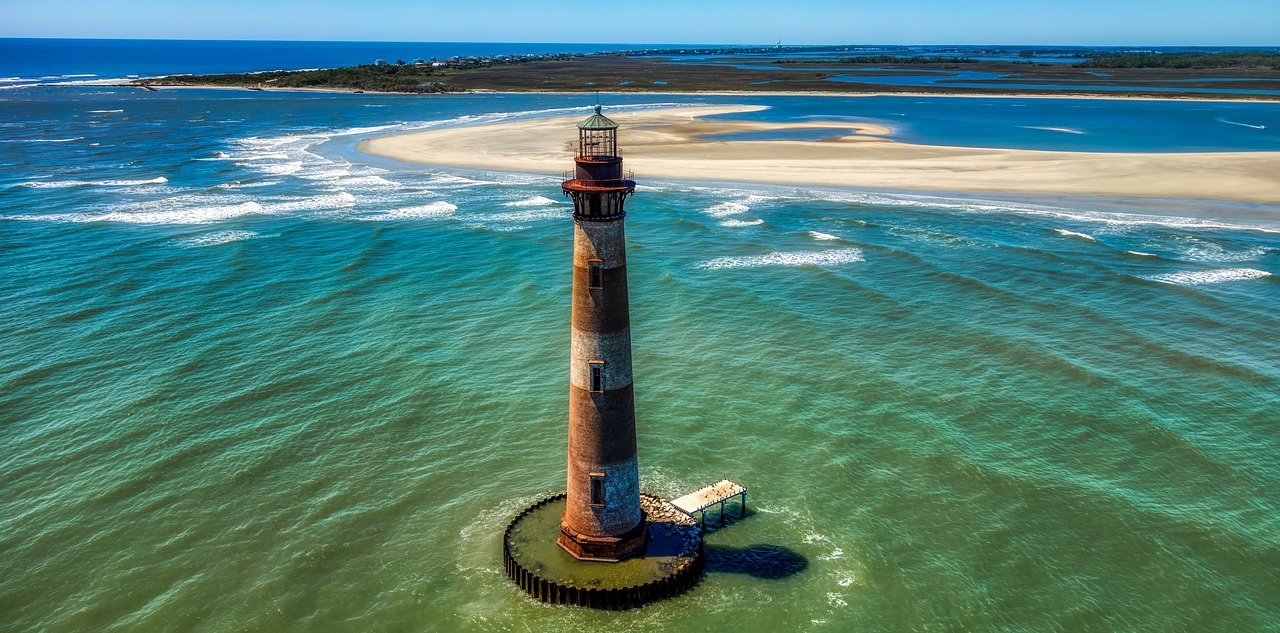South Carolina Essentials: An Introduction to the State’s Heritage and Landscape
South Carolina, known as the Palmetto State, is a state rich in culture, history, and scenic beauty. Situated in the southeast region of the country, South Carolina shares borders with Georgia to the west and south, North Carolina to the north, and the Atlantic Ocean to the east. With a variety of landscapes ranging from the sandy beaches of the Lowcountry to the rolling hills of the Piedmont, South Carolina offers a unique blend of natural attractions, historical landmarks, and vibrant communities.
A Profound Historical Heritage
South Carolina has a deep historical legacy that is integral to the story of the United States. The state played a crucial role in both the American Revolution and the Civil War, with key battles fought on its soil. Charleston, one of the state’s oldest cities, was a major port during the colonial period and later became a flashpoint in the Civil War. The first shots of the Civil War were fired at Fort Sumter in Charleston Harbor on April 12, 1861, marking the beginning of a conflict that would shape the nation’s history.
The state’s colonial history is also significant, as South Carolina was one of the original 13 colonies that declared independence from Britain. The state’s early economy was heavily dependent on agriculture, particularly the cultivation of rice and indigo, which were labor-intensive and relied on the exploitation of enslaved Africans. This history of slavery and plantation life has left a lasting impact on the state’s culture, social fabric, and race relations.
Cultural Heritage
South Carolina’s cultural heritage is a rich tapestry woven from the influences of Native American, African, and European traditions. The Gullah culture, which developed among African Americans on the Sea Islands of South Carolina and Georgia, is particularly notable. The Gullah people have preserved more of their African linguistic and cultural heritage than any other African American community in the United States. Their unique creole language, cuisine, music, and crafts continue to thrive and are celebrated as an essential part of the state’s identity.
The state is renowned for its contributions to the arts as well, especially to music and literature. The beauty and intricacy of South Carolina have been made more widely known by writers like Pat Conroy, whose books frequently examine life in the South. The musical traditions of the state are equally rich, with gospel, blues, and jazz all having significant cultural influence. One of the top performing arts events in the nation, Spoleto Festival USA takes place every year in Charleston. It features a broad spectrum of artistic disciplines and draws talent from throughout the globe.
Innate Beauty
One of South Carolina’s most alluring aspects is its breathtaking natural beauty. The Blue Ridge Mountains in the northwest, the Piedmont in the middle, and the Atlantic Coastal Plain in the east make up the state’s three primary areas. These areas all have different topographies and outdoor activity options.
Part of the greater Appalachian range, the Blue Ridge Mountains are distinguished by their verdant hills, dense woods, and breathtaking views. Hikers, campers, and outdoor enthusiasts frequent this region to explore the Appalachian Mountains‘ trails and take in the breathtaking scenery of locations like Table Rock State Park.
The Piedmont region, which includes the cities of Greenville and Spartanburg, is known for its fertile soil and agricultural heritage. This region is home to numerous farms, orchards, and vineyards, offering a taste of South Carolina’s agricultural bounty. The Piedmont also boasts several lakes and rivers, making it a popular destination for boating, fishing, and other water sports.
The Atlantic Coastal Plain, which includes the Lowcountry and the Sea Islands, is perhaps the most iconic region of South Carolina. The Lowcountry is famous for its marshlands, tidal creeks, and historic plantations, as well as its charming coastal towns like Beaufort and Hilton Head. The beaches of the Grand Strand, which stretches from the North Carolina border to Georgetown, are some of the most popular vacation destinations on the East Coast, attracting millions of visitors each year.
A Culinary Adventure
South Carolina’s food culture is a rich blend of Southern traditions and Gullah influences, with a focus on fresh, local ingredients. Lowcountry cuisine, characterized by seafood dishes like shrimp and grits, she-crab soup, and oyster roasts, is a standout. Barbecue is also central, particularly the mustard-based sauce unique to the state. Rice, a staple from the region’s plantation history, remains a key ingredient in iconic dishes like Hoppin’ John and perloo.

Development and Economic Growth
South Carolina’s economy has undergone significant transformation in recent decades. Historically reliant on agriculture, the state has diversified its economy to include manufacturing, technology, and tourism. The automotive industry has become a major driver of economic growth, with companies like BMW and Volvo establishing significant manufacturing operations in the state. Additionally, South Carolina has attracted a number of aerospace companies, including Boeing, which has a major facility in North Charleston.
Tourism continues to be a vital part of South Carolina’s economy, with millions of visitors flocking to the state each year to enjoy its beaches, golf courses, historic sites, and cultural festivals. Myrtle Beach, Charleston, and Hilton Head are among the top tourist destinations in the state, each offering a unique blend of attractions and activities.
Challenges and Opportunities
Despite its many strengths, South Carolina faces a number of challenges. The state has higher-than-average poverty rates, particularly in rural areas, and struggles with issues related to education and healthcare. However, efforts are being made to address these challenges through economic development initiatives, educational reform, and public health programs.
Looking to the future, South Carolina has significant opportunities for growth and development. The state’s strategic location, favorable business climate, and rich cultural and natural resources make it an attractive destination for investment and tourism. As South Carolina continues to evolve, it remains a place where history and modernity coexist, offering a dynamic and vibrant environment for residents and visitors alike.
